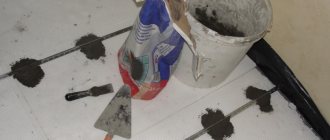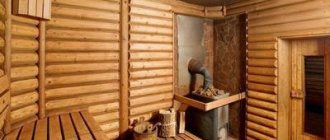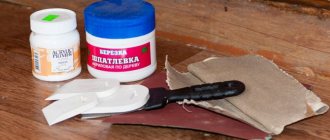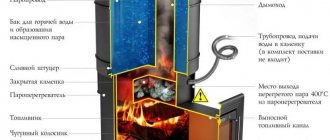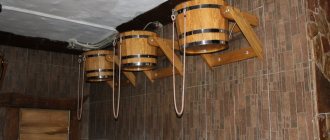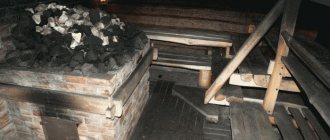Dry shutter. Photo Petrovich
Systems for the reception and disposal of wastewater and liquid waste are an essential element of structures for various purposes. One of the components of the systems is the shutter. Until recently, the most popular option was water seals (wet, water or hydraulic seals).
But the requirements for plumbing equipment are constantly increasing, so consumers are offered new solutions with improved technical characteristics. One such solution is a dry shutter.
What is it, device, principle of operation, functions
A dry gate is a device that is an element of a system for collecting and discharging waste, melt or rain water. In shower drains, the valve is located inside the siphon, which is a tube with threads located on both sides, most often made of polypropylene or plastic. Threaded connections provide fastening to a plumbing fixture on one side and exit to the sewer system on the other. These elements are often called “dry siphons” .
Dry gate for vertical drains Viega. Photo Petrovich
Inside the valve there is a damper (valve) in the form of a membrane, float or pendulum, which works like a valve. The damper (valve) opens under the pressure of waste water, which goes into the sewer system, then the damper closes. The damper performs the main functions of the entire structure for collecting and draining water. First of all, it blocks the cross-section of the pipe and prevents the passage of odors from the sewer into the room.
In hydraulic valves, the function of the valve is performed by water , but its drying out during prolonged inactivity leads to the fact that the device ceases to perform its own functions. Therefore, hydraulic valves are only suitable for equipment that is in constant use . Dry valves are an excellent solution for any structure, which is why they are in high demand.
An important difference (and at the same time the main advantage) of dry valves in comparison with other types of equipment is that they do not allow drains to pass in the opposite direction , which eliminates flooding of the room. This is especially true for premises located on the lower floors of apartment buildings. In addition, dry seals prevent large debris from entering the sewer system.
Video, device example
And the next video shows how you can modify a purchased drain with your own hands and it will definitely be dry and frost-free.
Using an air vent valve in a private home
Sometimes there are situations when it is necessary to install a vent valve. This is necessary if, when designing a private house, they did not provide for the installation of a drain pipe, which provides sufficient ventilation of the sewer system, or if it is not possible to bring this pipe through the roof.
The sewer check valve has a long service life
The air vent valve provides many advantages to private homeowners:
- You can significantly reduce the costs associated with the installation of a sewer system and roofing work without removing the riser outside;
- The absence of a drain pipe will help avoid roof leaks;
- The likelihood of fire spreading through sewer pipes in the event of a fire is reduced;
- There is no such nuisance as a pipe on the roof freezing and a stream of cold air passing through it.
A valve installed on the drain pipe significantly increases the efficiency and quality of ventilation, especially in those houses where a large number of different sanitary appliances are installed. In addition, if the house uses local sewerage using a septic tank located near the house, or if there is a swimming pool and other devices with a large number of drains, it is necessary to include a waste pipe in the sewerage system.
A non-return valve is a necessary part of the sewer system that protects the house from flooding in the event of a malfunction of the system or plumbing. In stores you can see several types of valves: automatic air valves for a private home, anti-vacuum valves for any number of pipes, and combined ones. You can install the aeration valve and non-return valve for sewerage yourself, following the requirements of the instructions for the selected device. The main thing is to correctly determine the place where the valve can be installed.
Where they are installed: for drains, in bathhouses, under tiles and more
First of all, dry valves are installed in rooms in which the operation of plumbing equipment is not carried out on an ongoing basis, i.e. less than twice a week: drainage systems of washing machines and air conditioners, often in bath plumbing fixtures, shower cabins, bathtubs, shower trays and other appliances. Designs with dry shutters are perfectly combined with various floor coverings: tiles, tiles, etc. Installation of structures with dry shutters in rooms equipped with “warm floor” systems is relevant.
Attention! Dry valves should not be installed in kitchen sinks because the valve will not last long in such a system.
Advantages and disadvantages of sewer valves
The demand for dry shutters is due to a wide range of advantages:
- efficient and unhindered collection and disposal of water;
- no need for frequent equipment checks;
- operation does not require constant presence of water in the system, so the device can be installed in unheated rooms without fear that the water may freeze. Therefore, dry siphons are suitable for installation, for example, in summer houses and cottages;
- good resistance to mechanical stress, unlike wet closures, dry ones are difficult to tear off;
McAlpine shower drain (MRFGC3SNRV-110) with dry seal. Photo Petrovich
- are compact;
- two connection options: horizontal and vertical - allow you to install siphons with a dry seal in various rooms, including small spaces;
- easy to use;
- valves are made from anti-corrosion materials;
- installation is a fairly simple process , which can be completed even by a contractor who does not have the appropriate knowledge in the field of repair;
- the design of the device prevents the accumulation and stagnation of water , and, accordingly, is able to protect the owners of the premises from unpleasant odors, as well as from the appearance and proliferation of bacteria and microbes;
- long service life;
- high resistance to sewer blockages;
- excellent noise insulation performance;
- compliance with the requirements of Russian state standards, availability of necessary licenses and certificates.
As a disadvantage, it is possible to note that dry valves are not very common; most siphons and ready-made structures, for example, shower drains, are provided with a wet valve. In addition, drains with a dry shutter have a more complex design when compared with their analogues.
Preventing blockages
Of course, it is easier to prevent pipes from clogging too often than to constantly clean them. To do this, you need to constantly follow simple rules:
- always place a grate on the drain to prevent large particles from falling into the pipe;
- after washing a large amount of dishes, pour hot water into the pipe for a minute;
- do not pour waste fat into the sink - it is better to do this into the toilet;
- It is also better to drain water after washing the floors into the toilet;
- Once every six months, try to clean the pipes with a plunger or disassemble the siphon and remove excess debris from it.
These methods will at least increase the service life of the siphon and relieve you of the need to constantly clean it.
Comparison with a water seal
Siphons with a water seal are a traditional solution, but in some aspects they are inferior to their dry counterparts . The devices function in different ways: in a wet shutter, water acts as a barrier against odors. However, the water may freeze or evaporate , leaving the door open for sewer odors to enter the room. This is a significant disadvantage of devices that dry valves do not have. They work on the "nipple" principle.
There is a damper inside that acts as a check valve . As a result, such a gate also performs regulatory work, i.e. prevents wastewater from moving in the opposite direction. A dry shutter is more functional; it can work either independently or in tandem with a hydraulic one. Dry valves are easier to install and operate, compact, and durable.
Dry seal for sewerage: a mandatory element of a wastewater receiver
A dry sewer seal is a device that prevents unpleasant odors from the sewer system from entering the premises. More recently, water valves were considered the most common, but every year the requirements for plumbing equipment are growing and new devices with more advanced characteristics are appearing.
A dry seal is a device that prevents gases from escaping from the sewer into the room, but does not require the presence of water in the siphon
Types: vertical and others
In accordance with the connection option to the sewer system, horizontal and vertical types of drain structures are distinguished. The latter are more versatile, suitable for installation in rooms of various sizes. Space is required for installation of vertical devices.
Vertical siphon McAlpine with dry seal ø50 mm polypropylene MRNRV50-PB. Photo by Leroy Merlin
Among the list of manufactured dry sewer valves, three types are distinguished according to the type of construction, which differ in their own characteristics and some features:
1) Membrane. The role of a damper (valve) in structures of this type is performed by a spring-loaded membrane. The operating principle of the devices is as follows. Under the pressure of water, the spring is compressed, the membrane opens and the water flows freely into the sewer system. Reducing the pressure brings the membrane to its original position, which ensures the tightness of the system.
2) Float-type or float-type. This type of device can be made independently, at home. Gates of this type are a combination of water and dry types. The principle of operation of the device is simple: if the valve is filled with water, then the float is on the surface of the water, i.e. is located in a floating state and does not interfere with the drainage of water into the sewer. After the water leaves, the valve is lowered and the hole is sealed.
3) Pendulum valves are equipped with a valve fixed at one specific point. When a flow of water hits the surface of the valve, it deviates from its own axis and opens paths for the discharge of liquid into the sewer system. The valve returns to its original position under the influence of gravitational forces.
4) With molecular memory . Gates of this type are rarely mentioned, they are high-tech devices, and their cost is much higher than their analogues.
Gates are also classified according to brand and manufacturer. Among the most famous brands are Tece, Viega, Hepvo, McAlpine. Models of these brands are the highest quality product options. Some businesses offer dry siphons for various needs, e.g. suitable for installation in the design of various plumbing fixtures.
Variety of design solutions
Today on sale you can find many dry ladders that have their own unique configuration. There are three main types of drains, depending on the shape:
- corner; round; rectangular.
Corner drains are mounted in a corner (hence the name) and are almost invisible. Rectangular and round fixtures can be installed in any part of the bathroom. Plastic, steel and combined models are very popular in the plumbing market.
Gratings for drains differ in the pattern of slots, perforations, etc. The range of gratings is incredibly wide.
There are also products that have LED backlighting. A backlit drain can create a unique atmosphere in the bathroom. However, the cost of such a device is higher.
Depending on the design, the drain is installed in the center of the floor or in any corner, and the grate can play a decorative role, complementing the interior
There are also quite a lot of budget options, so choosing the right option for a specific case will not be difficult.
It is worth remembering that the appearance of the device is secondary. The main thing you need to pay attention to when choosing such a device is the technical characteristics. This will allow you to purchase an effective product that will last for many years.
How to choose
To make the best choice and not make a mistake when buying a shutter, you need to take into account a number of factors, the main ones are:
1) Diameter. Depending on the type of device to which the siphon with shutter will be connected, and in order to ensure optimal throughput, the device should have one or another diameter. For example, the best option for a shower cabin and bath is a shutter with a diameter of 100 mm, for a sink - 50 mm.
2) Height. Horizontal type bends have indicators of 70-100 mm, vertical ones - 150-180 mm. Therefore, in conditions of limited space, horizontal (or side) dry siphons are the best choice.
3) If there are several plumbing fixtures located nearby in a room, then each one must be equipped with a separate device.
Siphon for sink WIRQUIN Senzo dry 40 mm. white. Photo by Maxidom
4) High-quality installation of a siphon for a dishwasher or washing machine is only possible when choosing a horizontal device that can be mounted sideways .
5) It is recommended to purchase dry siphons from trusted suppliers , official partners of manufacturers, or directly from the manufacturer.
6) You also need to keep the design of the device in mind. For example, shower drains with a dry seal are sold in a large number of decorative removable grilles, which allows you to choose a product for a room designed in any style.
Main technical characteristics
Before purchasing a dry sewer drain, you need to study its technical characteristics. First of all, you should pay attention to the following points:
- location of the outlet; indicators of the outlet section; height; throughput coefficient.
To purchase a suitable drain, you need to know exactly its dimensions and the diameter of the drain hole.
The outlet for shower drains with a dry shutter can have two locations:
- vertical; horizontal.
The next factor that is worth paying attention to is the indicator of the outlet cross-section. Today you can find devices on sale that have a diameter of 50 and 100 mm.
Useful information! For household purposes, products with an outlet of 50 mm are used, and drains with an outlet cross-section of 100 mm are used in public showers and baths. The second version of the devices is capable of removing wastewater at a speed of more than 2.1 l/s.
Before purchasing this device, much attention should be paid to such an indicator as the height of the ladder. Today, there are models whose height ranges from 7 to 18 cm.
Installation
Shower drain Viega Advantix 452452 100×100 mm dry shutter. Photo by Leroy Merlin
A dry shutter can be part of various designs; if you follow the instructions and carry out the work carefully, their installation will not cause difficulties . Instructions are supplied with the plumbing kits. The biggest problems when doing DIY installation are caused by high-quality sealing . Therefore, if the performer is not confident in his own abilities, then it is recommended to turn to specialists. But installation is quite simple, the main steps are:
* you need to check the device ; the sealing elements must be exactly in place;
* between the siphon and the plumbing fixture it is necessary to place an o-ring , which seals the joint;
* installation of a siphon and application of sealant to the joints.
With your own hands
It is possible to make a siphon with a dry seal yourself. To do this, you will need a plastic pipe, a ball (ball) and a gasket, a set of standard screwdrivers, an adjustable wrench and a construction knife. A ball is placed in the drain hole , the dimensions of which are slightly larger than the diameter of the pipe. The ball is secured at the edges with a sealed gasket . The height of the element above the level of the drain pipe should be 50 mm. During operation of the system, the ball floats up and water flows into the sewer. During inactivity, the ball will lie on the hole and block the path for sewer odors.
Clearing the blockage
Since the most common cause of poor water seal performance is a typical blockage, you can mostly solve the problem yourself, without the help of a plumber.
Cleaning the knee
To begin with, you can try the most common methods - cleaning with a plunger or using special cleaning products. If this does not help, then a more effective method would be to clean the siphon itself. To do this, you need to carefully disassemble the siphon, first place a basin or put a rag under the drain and clean it using household products. It will not be superfluous to disinfect the internal surfaces.
Plumbing cable
If the result is not achieved or it is insignificant, this indicates that the cause of the blockage is not in the siphon, but literally deeper - the pollution is clogged in the drain pipe itself. Then you need to call a plumber, but if you have a plumbing cable in your arsenal, then you can do the operation yourself. To do this, you can use the following algorithm of actions:
- Unscrew the top nut connecting the siphon to the drain hole
- Unscrew the lower nut (the junction of the siphon with the sewer)
- Prepare a bucket or other container and then remove the shutter itself
- Insert a plumbing cable into the drain pipe
- Thread it all the way in (your hand should feel resistance)
- Use a rotating motion (using the handle) to clear the blockage.
It happens that the pipe looks like a coil and has many zigzags. This is not a reason to refuse cleaning - you can insert the cable through a special window on the side. In this case, you need to act according to the following algorithm:
- Unscrew the special cap and immediately place a bucket - most likely, a large stream will pour out
- Carefully push the cable into the hole
- Push it all the way
- Rotate the handle until the debris is completely removed.
TIP After cleaning, be sure to run the drain with hot water for 1-2 minutes. Thanks to this, you will wash away any remaining debris, and the drain will become perfectly clean.
